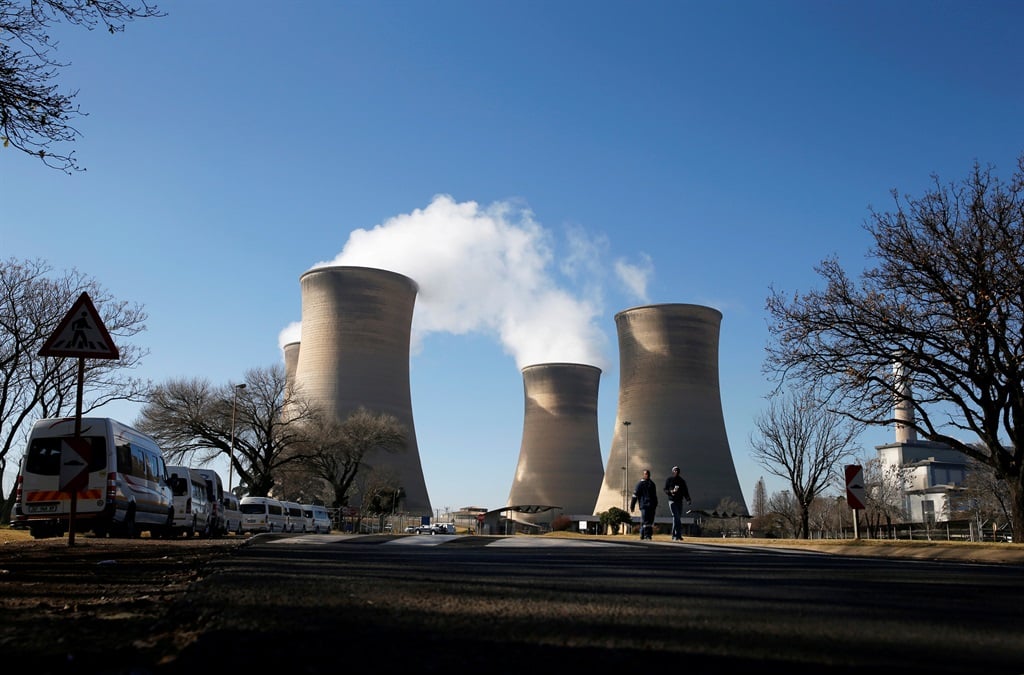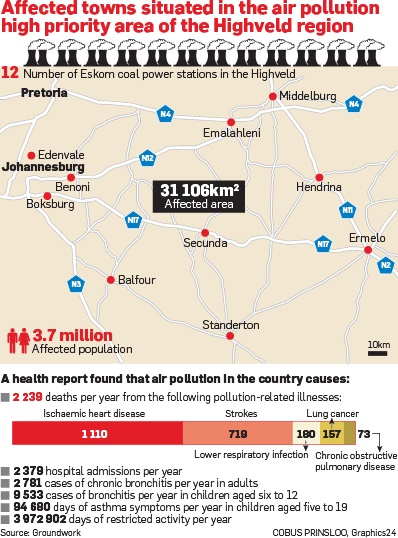
Eskom’s initiative to reduce its carbon footprint has flopped big time.
In an effort to reduce its carbon footprint, the power utility supplied electrical stoves and heaters, and household insulation in areas exposed to sickness-inducing and sometimes fatal emissions from its coal-powered electricity stations.
In 2016, Eskom piloted the project in 140 households in KwaZamokuhle near Hendrina in Mpumalanga in an attempt to be exempted from complying with the minimum emission standards set by the department of environmental affairs.
Eskom found that 50% of air pollution in the area came from household use of coal. The power utility has been struggling to reduce the pollution it releases into the air and has decided on the offset project, which it aimed to roll out in all settlements located near its power stations.
The company bought residents electricity appliances and insulated their homes in exchange for them getting rid of their coal stoves, but the project has gone so bad that residents are reverting to using coal.
Environmental rights organisation Groundwork and some residents claim Eskom’s efforts were fruitless.
“They destroyed my house when they put insulation to make it warmer,” claimed resident Sunnyboy Skhosana (55).
“Their people plastered the house so badly that windows and doors cannot open and close properly. The roof is now leaking, but it was not before.”
Another problem the police officer experienced is that his electricity bill went up after he stopped using a coal stove. He has since bought another stove.
“This is not working well for us. The house is still very cold and the heater does not warm it as much as a coal stove,” Skhosana said.
Groundwork coal campaigns manager Robby Mokgalaka said Eskom’s project was not solving the air pollution problem in the Highveld.
“They are dealing with indoor pollution, but not outdoor. Eskom should just comply with the minimum emission standard and the department should force them to do so,” Mokgalaka said.
Groundwork believes that Eskom should reduce its power stations’ emissions instead of hiding behind an offset project against air pollution.
Eskom’s power stations contribute so much air pollution to Mpumalanga province’s Highveld region – which encompasses towns such as Witbank, Middelburg, Hendrina, Balfour and Ermelo – such that the department declared it an air quality hot spot in 2007.
The hot spot extends to eastern Gauteng, covering 31 106km2 and affecting approximately 3.7 million people.
However, it is not only Eskom that contributes to air pollution, but also the concentration of coal mines, smelters, metallurgical plants and households relying on burning coal for heating and cooking in the region.
UK-based air quality and health expert Mike Holland released a report commissioned by Groundwork last year, which estimated deaths caused by exposure to Eskom’s power stations pollution to be 2 200 every year.
The exposure, Holland found in the report titled Health Impacts of Coal-Fired Power Plants in South Africa, also caused thousands of cases of bronchitis and asthma in adults and children annually. This cost the country more than R30 billion annually through hospital admissions and lost working days.
These numbers exclude the impacts of pollution from mining, coal transportation and water contamination. Holland’s report also estimated the health impacts of individual Eskom power stations based on their emissions.
Eskom spokesperson Khulu Phasiwe said the community’s response to the project was positive and there were very few problems raised.
“Eskom is aware that there were problems identified with the ceiling solutions tested during the early stages of the pilot. The ceiling was found to stain owing to moisture in the roof or to existing leaks,” Phasiwe said.
He said that air quality monitoring results in low income areas in the Highveld showed that the major particulate pollution sources were generally from household emissions from burning coal or wood for heating and cooking, the burning of waste, and dust from roads and surrounding areas.
“Pollution from industries does contribute to local or ambient pollution, but it is generally the household emissions that are most significant at a local level,” he said.
Eskom planned large-scale rollout, Phasiwe said, to at least one settlement area per power station.
“The large-scale rollout is planned between 2020 and 2026, and would impact on an estimated 42 000 households at a cost in the order of R3.6 billion,” he said.
TALK TO US
Has Eskom done enough to reduce its carbon footprint?
SMS us on 35697 using the keyword EMISSIONS and tell us what you think. Please include your name and province. SMSes cost R1.50




 Publications
Publications
 Partners
Partners









